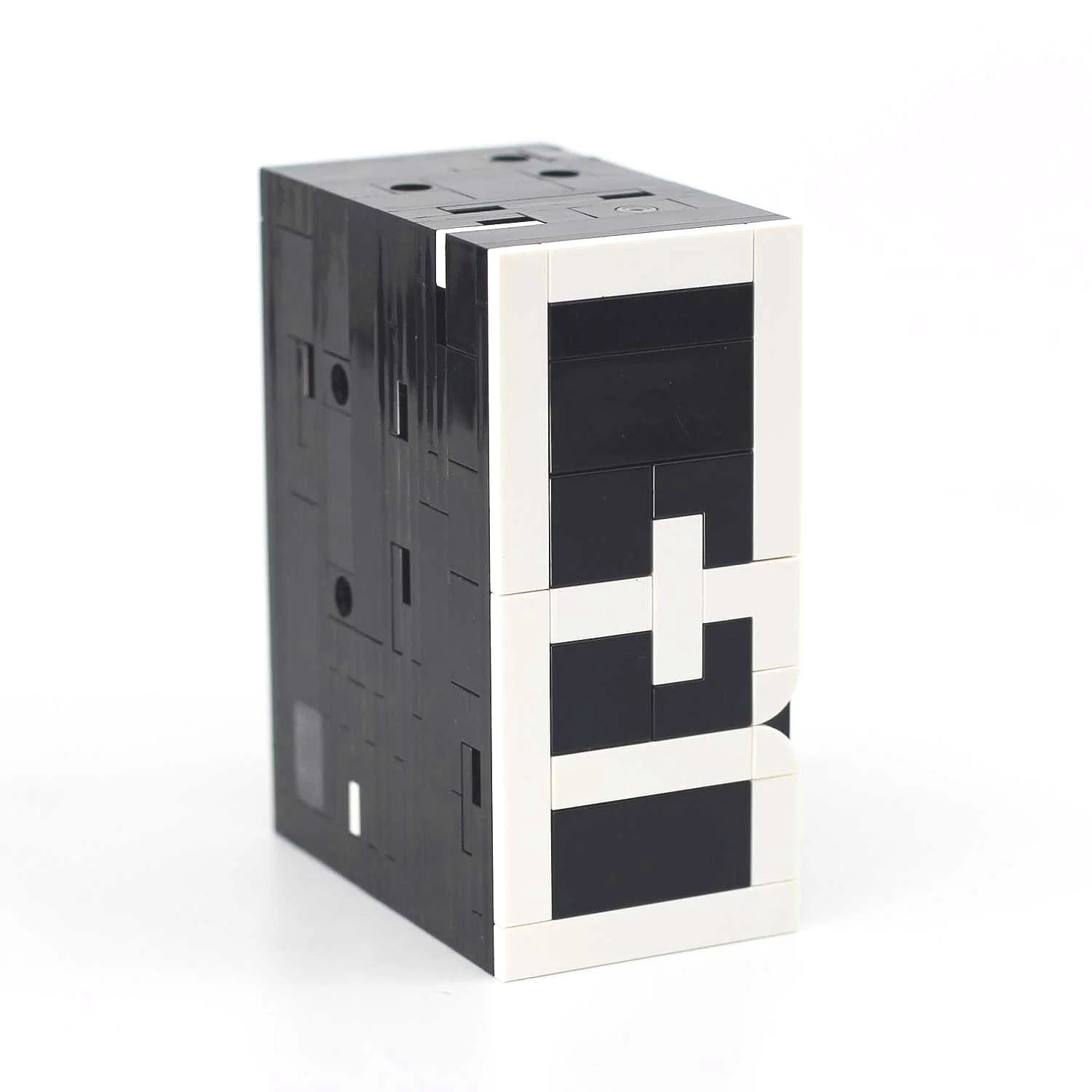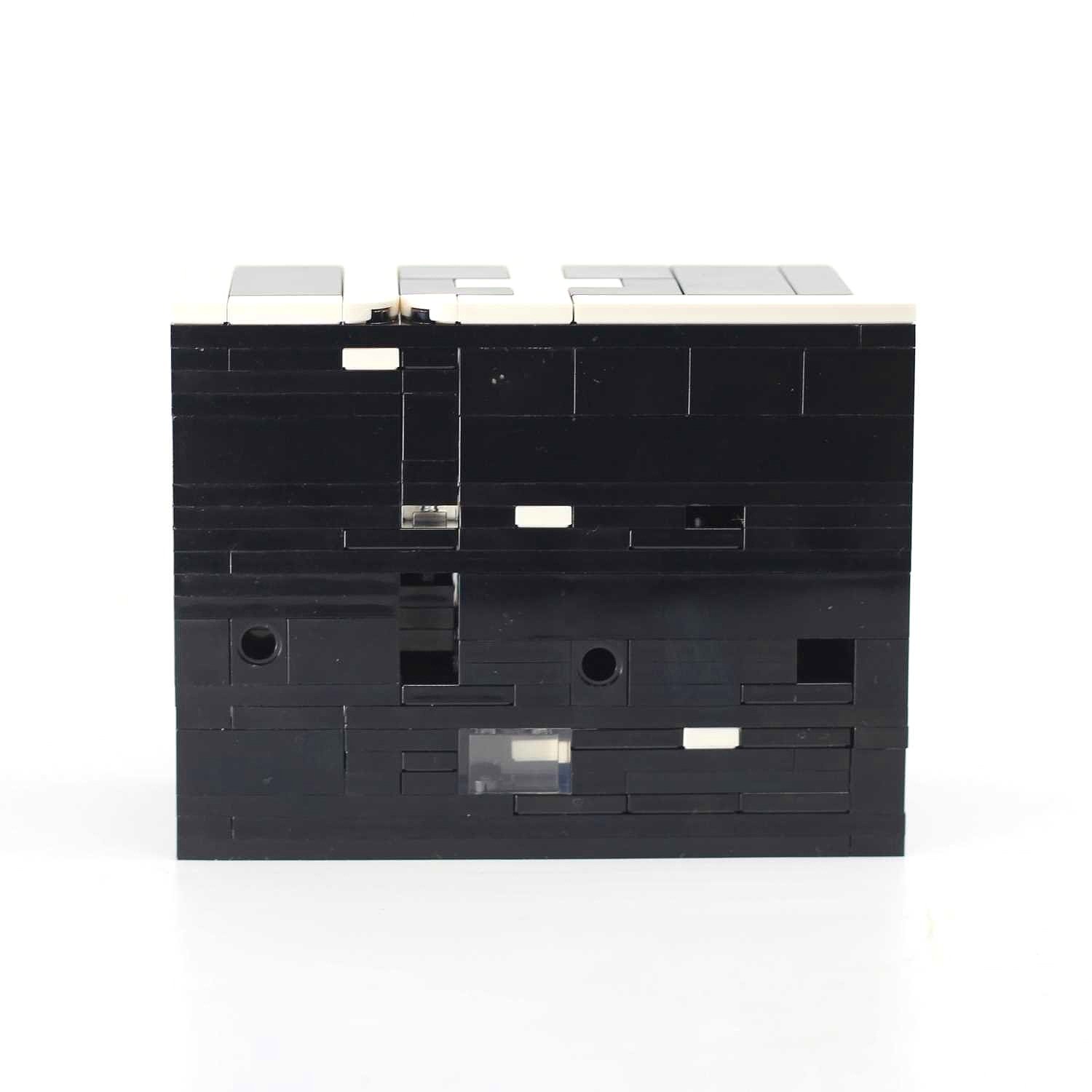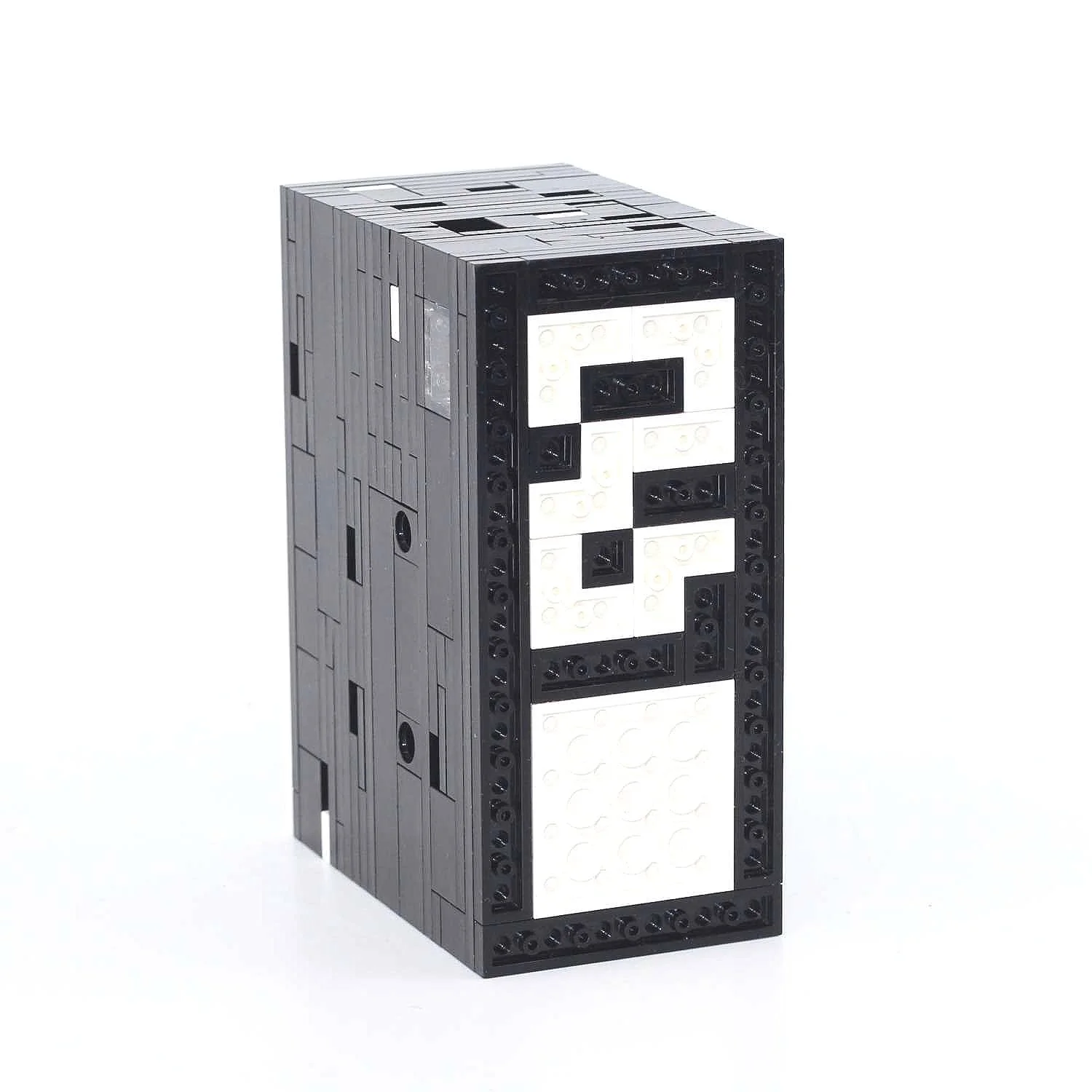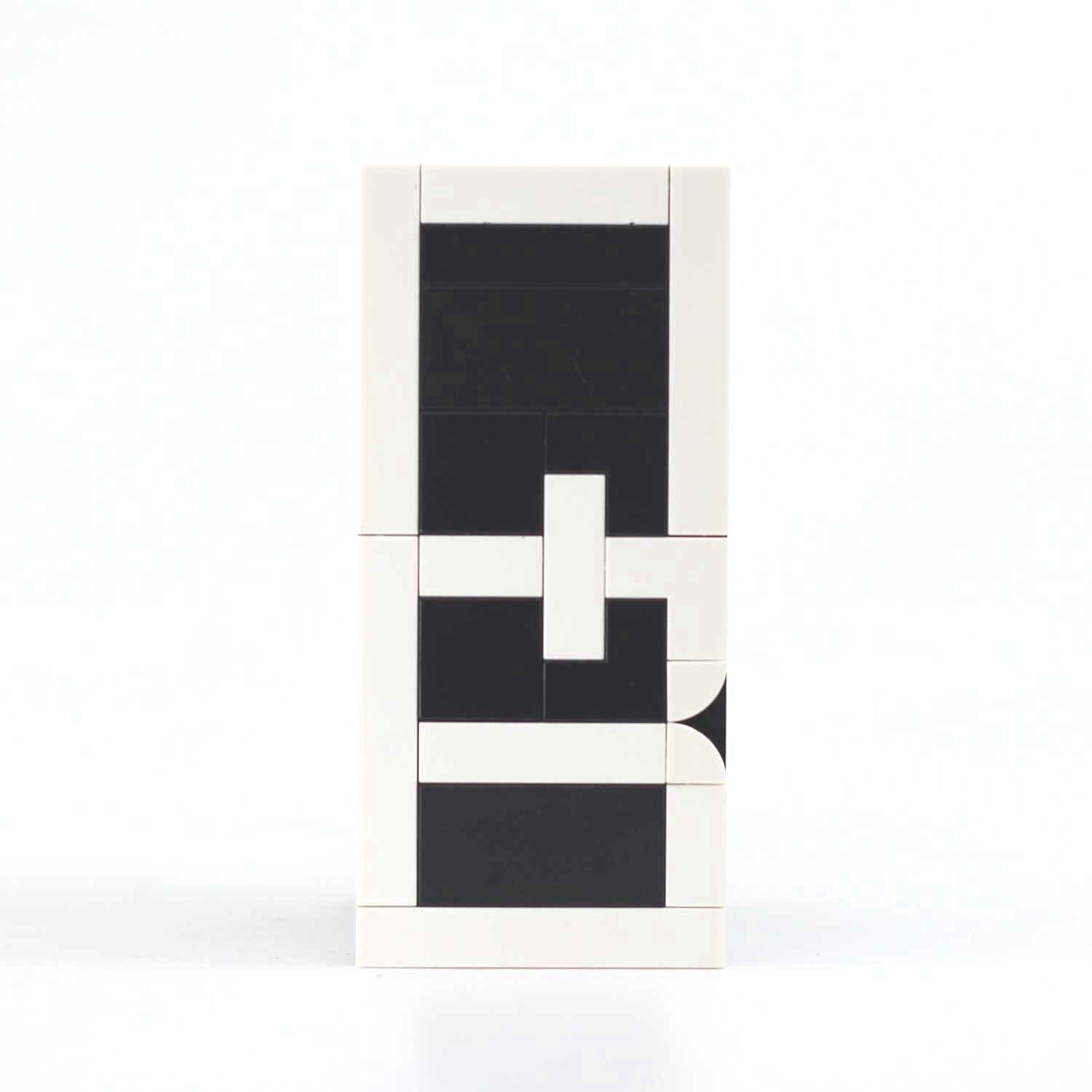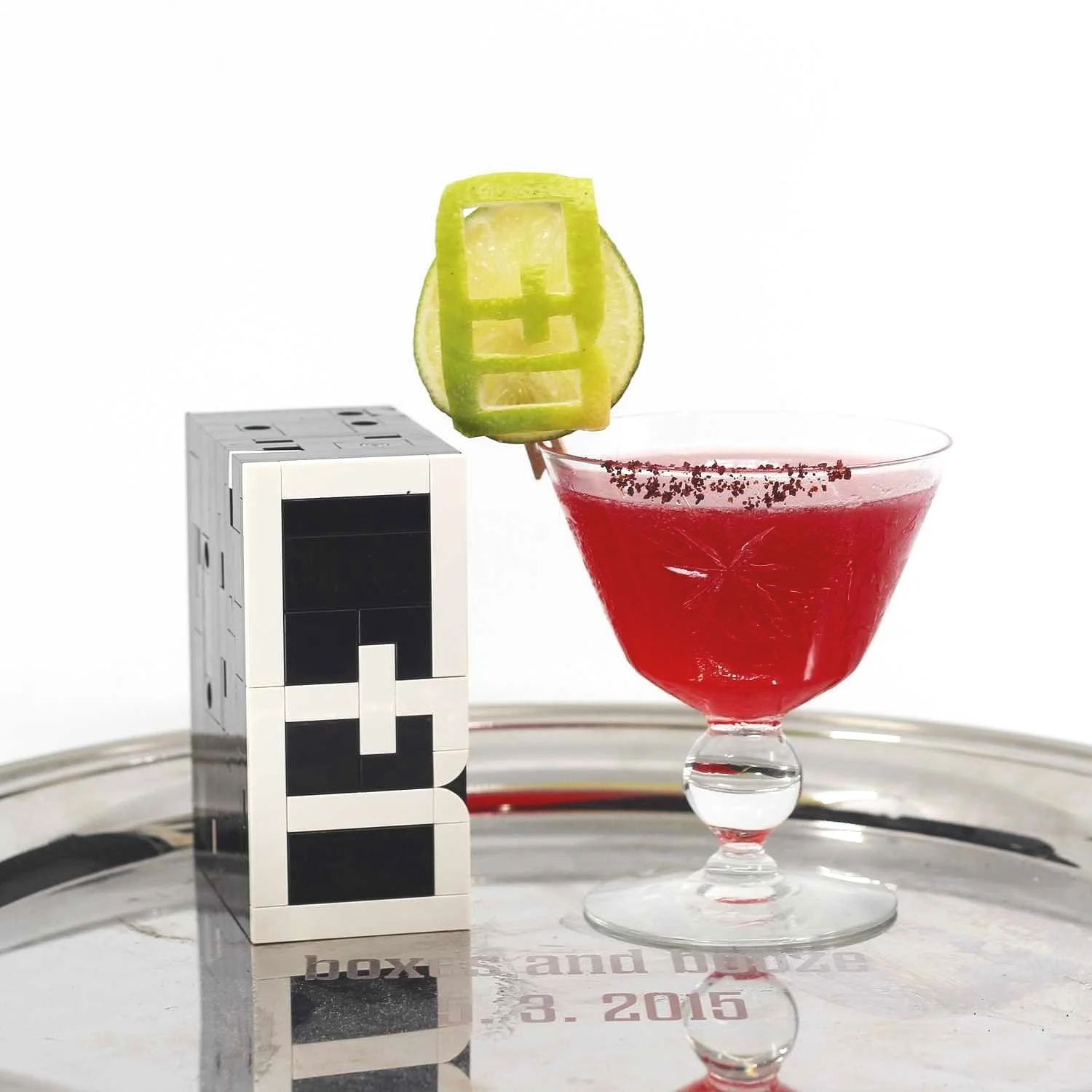Brick by Brick
The aMAZEing PuzzleBox
The advent of high quality 3D printing has opened the doors for many new designers, who have created some of the most innovative and enjoyable “plastic fantastic” puzzle boxes in recent times. These designers readily admit they would not have been able to produce their puzzles in more traditional media like wood or metal. Yet before this game changing tool existed, there was already a potential plastic medium in the world, just waiting to be enigmatically exploited.
The aMAZEing PuzzleBox by Quiz Brix
We have seen an equal explosion of puzzle boxes made from Legos in the last few years, from a number of clever designers. These tend to use a few tried and true mechanisms and misdirections, and are often limited by the abilities and variations of the bricks. Despite this they can be quite challenging and present a fun diversion. But the explosion of Lego boxes might also refer to an inherent feature, or flaw, in the medium. These puzzles are all too often easy to break apart, which can ruin the fun. Enter Peleg and Daniel, the Israeli team at Quiz Brix, who set out to improve on the Lego puzzle box concept, with a goal of no less than making the best such box yet.
Peleg recently told me about their company and the story behind their first box, the aMAZEing PuzzleBox. “QuizBrix is a small startup formed by Daniel and myself that aims to create and sell premium LEGO SD Puzzle boxes. We are two friends, both in our late 30's, each of us married with children and living in Israel. Daniel is more on the business side and I am the puzzle designer.” The friends had previously worked in startups and other business opportunities before deciding to become purveyors of the finest Lego puzzles.
“About a year ago I came across Chris Ramsay's YouTube channel and saw some crazy puzzles and thought to myself wow I can do that from LEGO bricks,” Peleg tells me. Love him or hate him, the puzzle community’s most famous troubadour has certainly stimulated fruitful interest in the genre. “LEGO is my true love from childhood - I was always very passionate about it and very creative. Besides that, I like challenges and knew back then that I had to try and put out a cool puzzle box out into the world. The moment that I knew I wanted to make a LEGO PB I drove to my parent’s house and went to the shed where all the childhood stuff is kept - I found my LEGO box filled with 20KG of pieces 30+ years old. I went back home and spread a sheet on the floor and spilled all the pieces on it and started assembling without any pre-planning. Within 24 hours I had my first version of the PB ready - it was cool and tricky and I remember being thrilled with the outcome.
“We are hoping to spread the word that we make the best LEGO PB out there and try to create more great puzzles in the future.” - Peleg
The next few days I spent giving it to people to get some feedback and along with great appreciation I understood that building a good LEGO PB is not going to be easy. I know a LEGO PB seems easy to build because LEGO is considered a toy, but the main concern (besides making challenging moves in the puzzle) for us was the goal of making it durable, fail proof, and to disable the feeling of "am i going to break it" that comes with puzzles made of LEGO.” This is a common concern as noted. Peleg made it one of the design priorities to solve this issue.
question this mark …
“It took around 500 hours! to create the final version of the puzzle - lots and lots of iterations. Each time you change one piece you need to check the whole puzzle to see that nothing else has changed. Lots of times I felt despair thinking everything is ok just to discover a fatal error that needed to be redesigned, and with it, other sections of the puzzle that were ok. But once you manage to solve a technical issue you get a rush of satisfaction that is hard to find anywhere else - making the puzzle is a puzzle by itself!” I have heard this sentiment so often from great puzzle designers that it must be a trait of the truly passionate creators. “I can't remember how many times I thought the puzzle was the final version (: ” Peleg had lots of ideas, and has fortunately saved some for his next design. The hardest part was “at the end letting go of the feeling that maybe it's not perfect.” Another sentiment I have often heard from designers. “Besides all that, of course you have all the issues of starting a business, writing a patent, designing a logo, acquiring LEGO pieces on a large scale (LEGO bricks cost a lot more than one might think) and the challenge of handbuilding each and every puzzle sold!”
Quiz Brix
Peleg related a funny story about one solver experience. “One time someone held the puzzle, read the goal ("find the golden bar within") and just opened it up like it was a loaf of bread trying to find it by disassembling it into pieces.” But for the more impractical among us, “I wanted to challenge myself by sticking to the original dimensions which made the technical solutions sometimes ingenious and at the end made the puzzle filled with 30+ steps, leaving you with a feeling of "how did they get so much fun stuff going on in that small size". I don’t think it’s an exaggeration, and indeed there is a lot going on in this small box. Right from the first discovered move, you know it will be different, and enjoyable. Everything is extremely well thought out. It is impossible to mess anything up, and presents a nicely balanced challenge which does not reveal itself too quickly. There are surprises in store, and unexpected, boundary pushing steps required which I have not seen in other Lego boxes. It is a very satisfying puzzle which lives up to its name in more ways than one.
Sumac Martini by Yotam Ottolenghi
To toast the ingeniously aMazeing puzzlebox, I’m going local. Israel has a wealth of rich flavors and spices traditional to the region which make cocktails as tasty as can be imagined. At his London restaurant Nopi, Israeli born British chef Yotam Ottolenghi makes food and drinks inspired by his Middle Eastern heritage influenced by the broader world cuisine, when he is not writing a food column for the Guardian.
got sum … ac?
Sumac, which is part of the cashew family, is not the most common spice in a North American grocery store, although the spice does grow in this region. It is more often associated with the Middle East, East Asia, and Africa. I couldn’t find it on the spice racks at any regular stores. But perhaps it should be easier to find, because it has the most delicious tangy and floral aroma, often likened to fresh lemon juice. It adds acidity without being astringent, and is fruity but not sweet. It is a main component of Zatar spice blend. It imparts a pretty pink hue to the infused vodka here, and pairs perfectly with another classic pink Mediterranean fruit, the pomegranate. Pomegranates are no strangers to the cocktail world, being the base for grenadine syrup. Here it is the pure juice that adds tartness and body to the drink. The falernum, a tropical almond and ginger lime syrup, completes the adventure. This martini will aMaze you, much like the box, and you will want to have that experience more than once! Cheers!
an amazing pair
Sumac Martini by Yotam Ottolenghi
2 oz sumac-infused vodka
1 ¼ oz Velvet Falernum
1 ¾ oz lime
1 ¼ oz pomegranate
Sumac
Shake ingredients with ice and strain into a pair of chilled coupes (makes 2 cocktails). Garnish with a dusting of sumac.
for more information and purchasing see Quiz Brix
and explore more on this site:

